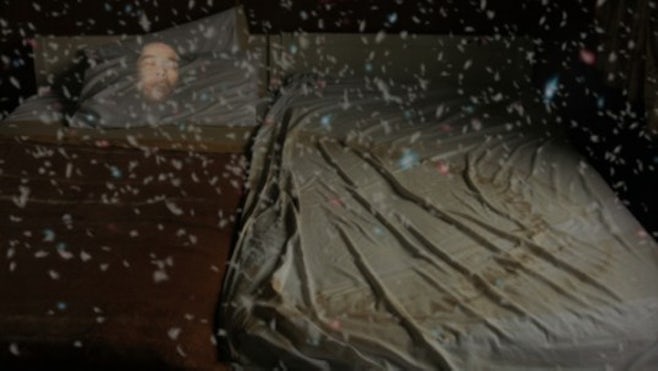
‘Does realism have any native counterpart in Asian aesthetics?’01With this question the Thailand-based curators Gridthiya Gaweewong and David Teh opened their thematic programme ‘Unreal Asia’ at the Oberhausen film festival last May. The programme sought to explore how ‘reality is registered by and entered into culture’; something that in their view ‘is far from universal, and ought to be theorised from local perspectives’.02 The local perspective they offered was that of the contentiously defined region of ‘Southeast Asia’, originally a military designation that groups the sub-region of Asia (such disparate countries as Burma, Cambodia, Laos, Thailand, Vietnam and Malaysia with Brunei, East Timor and Indonesia), from which the curators sought a critical distance. At stake in their proposal were the issues of ‘realism’ and of how to approach ‘Asia’, and more specifically how to approach Southeast Asia outside of the dominant and divisive politics of nationalism and exoticism.
Cinema in Asia, together with other developing regions as Africa and South America, has been theorised under the name ‘Third Cinema’ since the famous 1969 essay ‘Towards a Third Cinema’ by South American film-makers Fernando Solanas and Octavio Getino. Third Cinema has since been taken on to describe politicised anti-colonial film-makers such as Ousman Sembene in Senegal, Glauber Rocha and Cinema Novo in Brazil and in part the fifth generation film-makers in China. Unreal Asia sought to shift the discussion into the broader territory of digital culture, presenting work made and exhibited in diverse sectors that ranged from art galleries and biennials (with work by artists such as Apichatpong Weerasethakul and Araya Rasjarmrearnsooks from Thailand, Dinh Q. Lê form Vietnam and Ho Tzu Nyen from Singapore) to work produced by NGO and community organisations across the region and in particular in politically repressive countries such as Indonesia.
Taking a cue from the writer Eliot Weinberger’s proposal to ‘wind back the idea of ethnographic film’ – moving ethnography back towards the notion of ‘representation on film of a people’03 – the curators presented a broad range of work. Adapted Weinberger’s term, they put forward what they called ‘accidental ethnography, taking in directed observation and unscripted performance, provocation and liberal approaches to the truth’.04 Broadly, the curators sought to discuss an ethnology of digital media rather than cinema; a central argument of ‘Unreal Asia’ was that digital media in Southeast Asia goes hand in hand with reflective and self-authored representation which cinema and its inherent discourse of ‘colonial subject/object’05 never granted in the region. Videos in the programme – such as The Mango (Tonny Trimarsanto, Indonesia, 2008), about a transsexual in Indonesia or Better than Friends (Tuan Andrew Nguyen, Vietnam, 2003), about a Vietnamese couple who prepare dog meat in their backyard, as well as works produced by NGOs, such as Children of the State vs Underage Criminals (Ridwan, Rustam Junaesi, Jefri and Sibarani, Indonesia, 2006), made with inmates in a children’s prison – most explicitly conveyed this sense of the ethnographic as locally authored, particularly in the use of video to depict under-represented people and communities. The extent to which such works provide an answer to the curators’ key question of how ‘the “reality” of film [is] recalibrated by the new, digital vocabulary’ is unclear. Yet the difficulties to be overcome in order to produce these works and show these distinct ways of life in certain parts of the region cannot be lightly dismissed, even if the works themselves propose nothing discernibly ‘new’ in terms of cinematic or ‘digital’ vocabulary.
Regional tendencies in accessing ‘the real’ were most discernible when thematically grounded. In her catalogue essay May Adadol Ingawanij outlined how the representation of death in a range of recent video works reveals cultural difference rooted in attitudes to death and mortality. Works such as Ucu Agustin’s disarmingly off-hand video Death in Jakarta (Indonesia, 2006) follows the processing of unknown corpses in the Indonesian capital from the morgue to anonymous burial, presenting an arrestingly frank dissection of mortality, from the bureaucracy of processing each new body to the compassion of the grave digger who cries during the burial. Works from predominantly Buddhist Thailand, such as Araya Rasdjarmrearnsook’s The Class (Thailand, 2005), which sees the artist deliver a lecture to a group of cadavers and Uruphong Raksasad’s The Longest Day (Thailand, 2005), which follows an old woman in the rural north impatiently awaiting her own death, likewise show a remarkable intimacy with death and interest in the transformations it will bring.
The ways in which technology in Southeast Asia has been instrumental in questioning ‘state propaganda regarding monolithic national identity, conflict and revisionism and official multiculturalism06was explicit in the direct confrontation with the state seen in Speakers’ Corner (Martyn See, Singapore, 2006), which documents obstructed May Day protests in Singapore, or more subtly and subversively in the recollections of political life of an old actor in Meet Jen (Hafiz, Indonesia, 2008). The latter video highlights the way the memories of the past are constructed, by marking each edit in the monologue with an audible beep – which one irate Oberhausen spectator mistook for censorship.
The difficulty of nationhood within this region was made explicit in the selection of films, which veered, disorientatingly, from vastly different and at times opposing cultures, religions and politics, often within the same country. The work of Malaysian filmmaker Amir Muhammad operates within the internal contradictions and tensions of his country: Kamunting (Malaysia, 2002) explores the country’s controversial Internal Security Act and the petty and unpredictable bureaucracy which suppresses it, while Checkpoint (Malaysia, 2002) looks at the difficulties Muhammed himself encountered in travelling to Singapore by train – where as a Muslim he was questioned as a potential terrorist. Marut Lekphet’s Burmese Man Dancing (Thailand, 2008) depicts the cultural assumptions at play in Thailand’s relationship to its bordering countries. Here responses to a questionnaire about Burmese immigrants are presented in indecipherable subtitles, re-staging the problems of audience identification and cultural translation. A similar disjunction appears inKom Movies (Laos/Thailand, 2009), which recounts the difficulty foreign workers have in passing for Thai because of the elaborate local slang.

The ramifications of multiculturalism in a globalised context were central to the challenge of ‘Unreal Asia’, both for the curators but also for the audience. What is the appropriate discourse in which to adequately present work from such a range of cultures, without subjecting them to the national and divisive discourse of the dominant political parties in the region? The curators’, as well as some of the artists’, response was to turn to local cultures and politics, thus avoiding the problem of tasking a monolithic national identity with presenting marginal, itinerant and migrant communities. In Reception Room (Navin Rawanchikul, Thailand, 2008), about patriotic Indian immigrants in Thailand, or the Jewish community in northern India planning their return to the promised land in Return Home (Sonal Jai, Mriganka Madhukaillya, Indian/Germany, 2006). Apichatpong Weerasthakul’s Morakot/Emerald (Thailand, 2007) explores the past life of the Morakot hotel of the title, erected in the economic boom of the 1980s and now abandoned. Dust slowly accumulates in the empty rooms and with it memories of past occupants and past lives; of the exodus of Cambodian refugees fleeting the invading Vietnamese, the economic boom of the 1980s and other forgotten events.
The traces and remnants of the histories of conflict, economic expansion and shifting peoples permeate ‘Unreal Asia’, which is haunted by divergent histories, peoples and cultures off-screen. The ‘Unreal’ suggested by the programme’s title resides in the merging of historical and present states, and individual identity with the symbolic and mythic in Asian culture; as Ingawanji outlines in her essay, ‘film and video are imbricated with supernaturally inclined politics – the performativity of magic and mediumship in claiming power, justice and resistance – as well as with daily life’s seamless observance of the calls of restless souls.’07Works such as Ho Tzu Nyen’s Utama: Every Name in History Is I (Singapore, 2003) plays out the conflation of myth and modernity, first through a revisionist ‘native’ account of the naming of Singapore, based on the Javanese origin of the name prior to colonisation in 1819, and then through a street procession in the modern harbour of the capital, in which actors playing the now mythic natives pose for family photos, clashing with the country’s accelerated modernity and the state’s exoticisation of its ancient past. Similarly Dinh Q. Lê’s The Farmers and the Helicopters (Australia/Vietnam, 2006), a three-screen piece usually presented as an installation, brought many of the currents of the programme together. The work presents a helicopter made by a group of farmers, who are obsessed with the symbolic power of the flying machine as a vehicle of aid and rescue throughout the world – but not in Vietnam, as is suggested by footage excerpted by the film of helicopters during the Vietnam War and in Hollywood action films.
A raft of contradictions, distant shared lands and languages, misunderstandings and double meanings proposed a number of difficulties for approaching the region and presenting a coherent picture of it. The inconsistencies of the individual programmes within ‘Unreal Asia’ could be a result of grouping the countries under the tag of Southeast Asia – which many of the artists opposed by mixing their complex histories with the misconceptions of Asian exoticism. A critique of the region must begin within the many gaps, omissions and mistranslations, acknowledging the disparity and diversity of Southeast Asia as an entity and as an idea; often in such survey programmes, the region itself resists Western institutions’ attempts to co-opt or accommodate the work produced. The success of ‘Unreal Asia’ lay not in its exploration of ‘realism’ in the context of Asian aesthetics but in its proposals for how to approach the region without recourse to nationalism or exoticism, how to discuss marginal and unrepresented cultures and peoples alongside dominate powers and communities, and how the mythic and the unreal should inform arguments for the aesthetics of video and new media – issues that may be critically applied to the ‘reality’ of Southeast Asia.
– George Clark
Footnotes
-
Gridthiya Gaweewong, and David The, ‘Unreal Asia’, 55. Internationale Kurzefilmtage Oberhausen(exh. cat.), Oberhausen: Oberhausen Short Film Festival, 2009, p.81.
-
Ibid.
-
Eliot Weinberger, quoted in ‘Unreal Asia’, Ibid.
-
Ibid, p.83.
-
Ibid.
-
Ibid., p.84.
-
May Adadol Ingawanij, ‘Observing Life’s Remains’, 55. Internationale Kurzefilmtage Oberhausen, Festivalkatalog, op. cit., p.100
